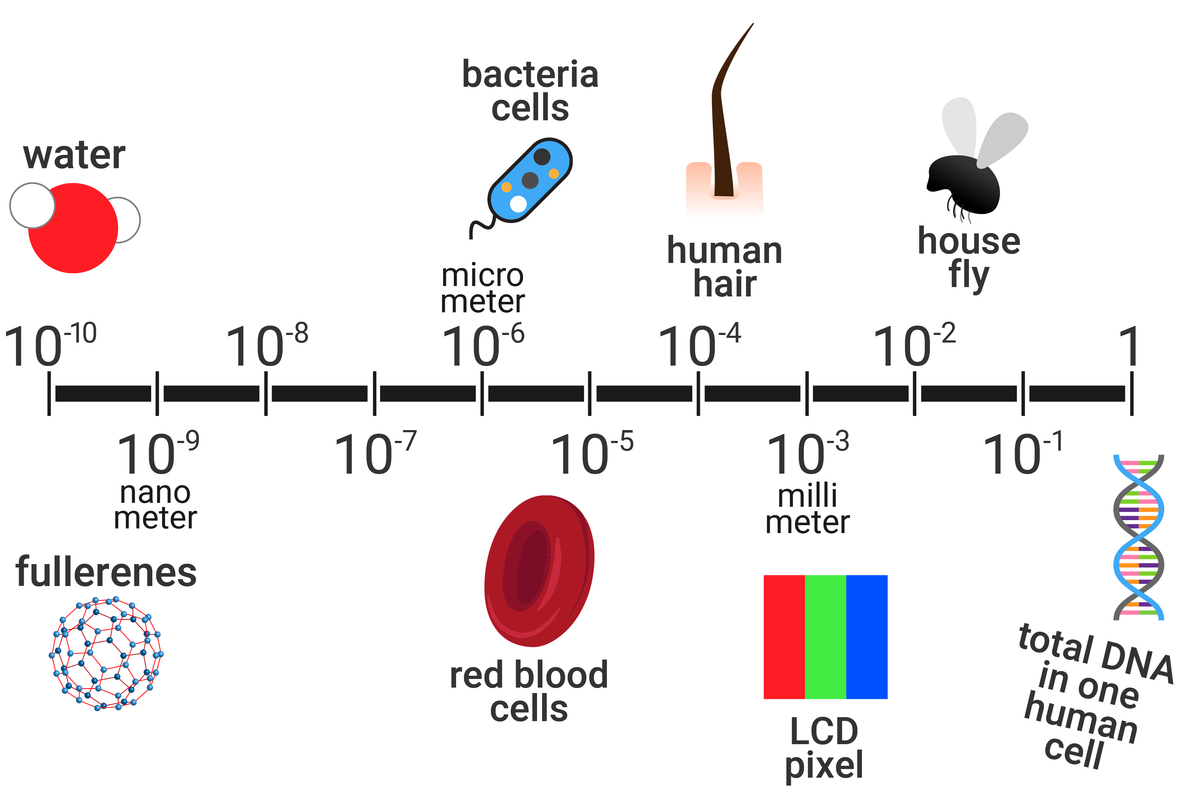
Bulk and Surface Properties of Matter including Nanoparticles (chemistry only)
Bonding, Structure, and the Properties of Matter
Nanoparticles
Nanoscience refers to structures that are 1–100 nm in size, of the order of a few hundred atoms. Nanoparticles, are smaller than fine particles (PM2.5), which have diameters between 100 and 2500 nm (1 x 10-7 m and 2.5 x 10-6 m). Coarse particles (PM10) have diameters between 1 x 10-5 m and 2.5 x 10-6 m. Coarse particles are often referred to as dust.
1 nm is 1 x 10-9 m (or 0.000000001 m)
As the side of a cube decreases by a factor of 10 the surface area to volume ratio increases by a factor of 10.
Nanoparticles may have properties different from those for the same materials in bulk because of their high surface area to volume ratio. It may also mean that smaller quantities are needed to be effective than for materials with normal particle sizes.
Nanoparticles have many applications in medicine, in electronics, in cosmetics and sun creams, as deodorants, and as catalysts. New applications for nanoparticulate materials are an important area of research.
An example:
- titanium dioxide blocks ultraviolet light, so it is used in sunscreens
- in bulk, titanium dioxide is white – it is used as a pigment in white paint
- individual particles (nanoparticulate) of titanium dioxide have no colour and cannot be seen when it is spread on skin
Risks of nanoparticles:
- people are concerned the small size of nanoparticles makes it possible to breathe them in, or to pass into cells
- inside the body, they might catalyse reactions that are harmful producing toxic substances
- modern nanoparticulate materials have not been used for long, so it is difficult for scientists to determine their risks

The large surface area to volume ratio of nanoparticulates mean they work as great catalysts. Compared to the same substance in bulk, they might:
- be more efficient
- catalyse different reactions
- produce different products